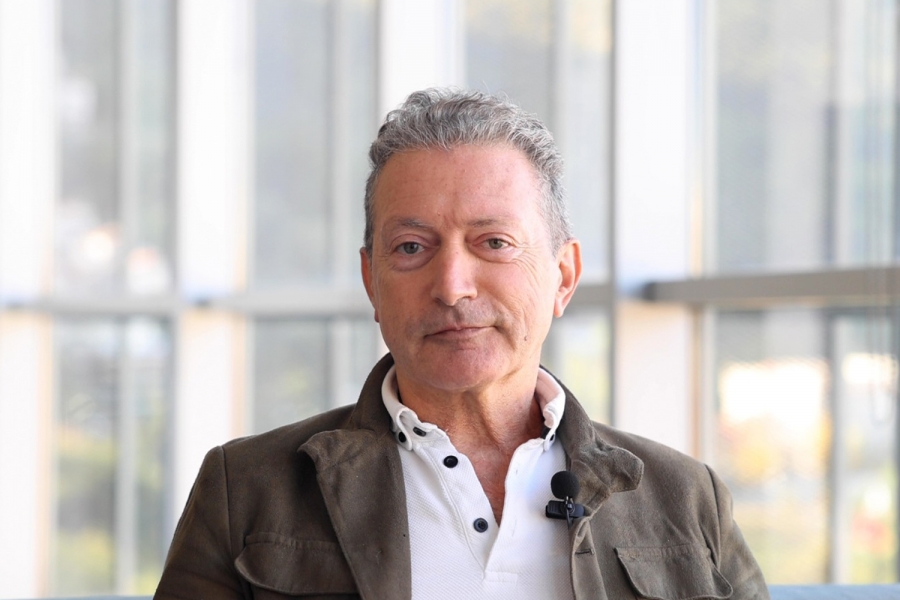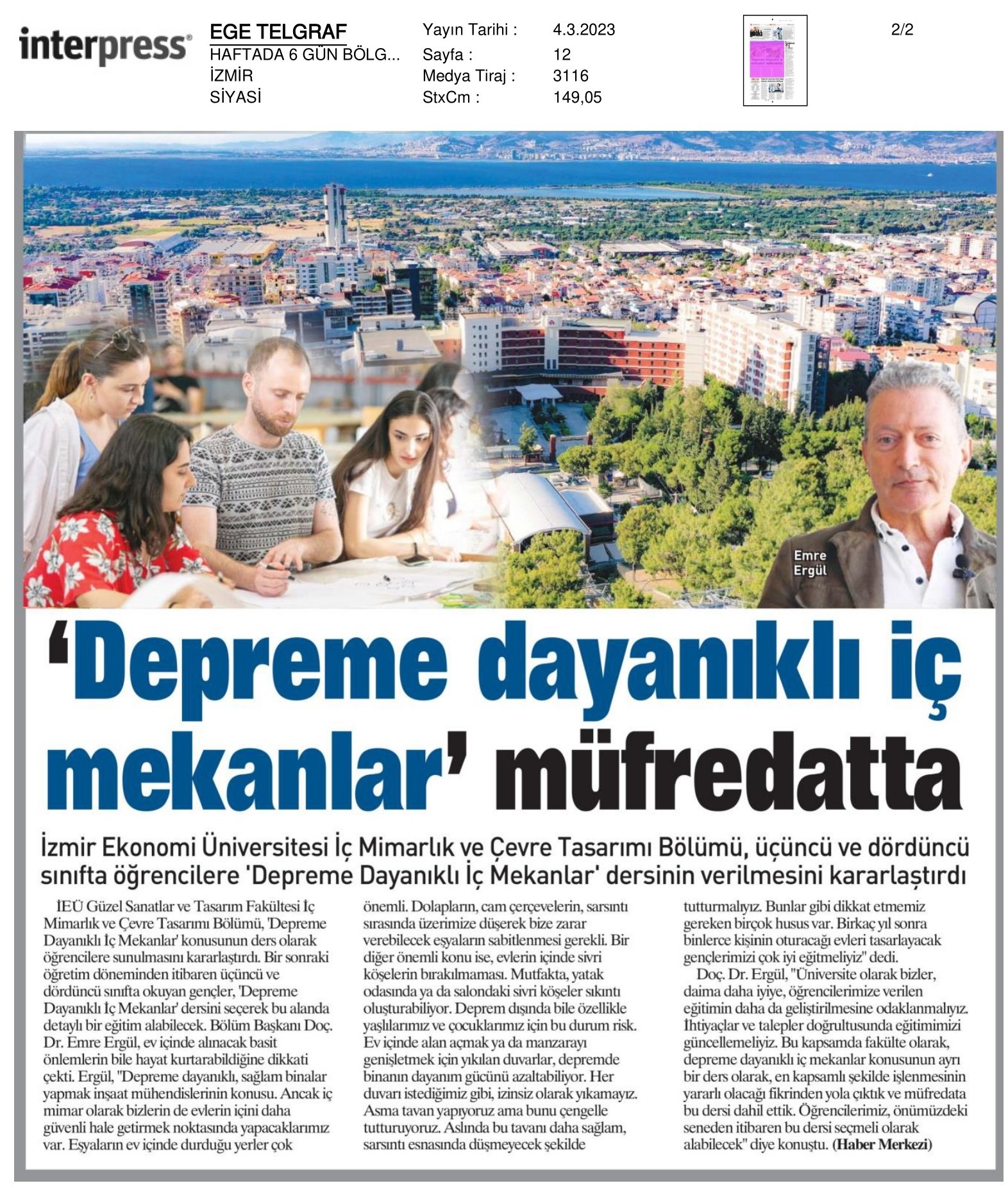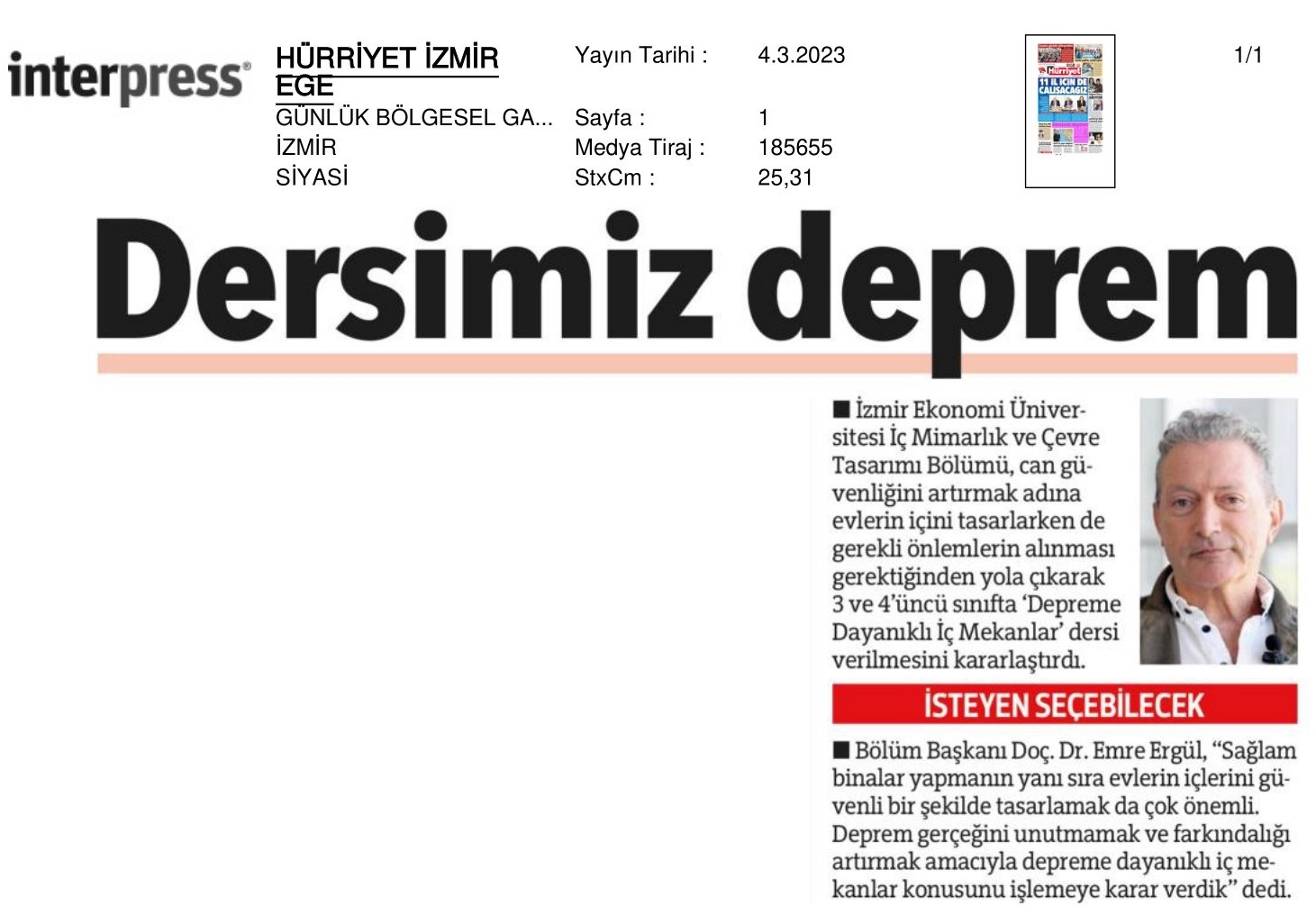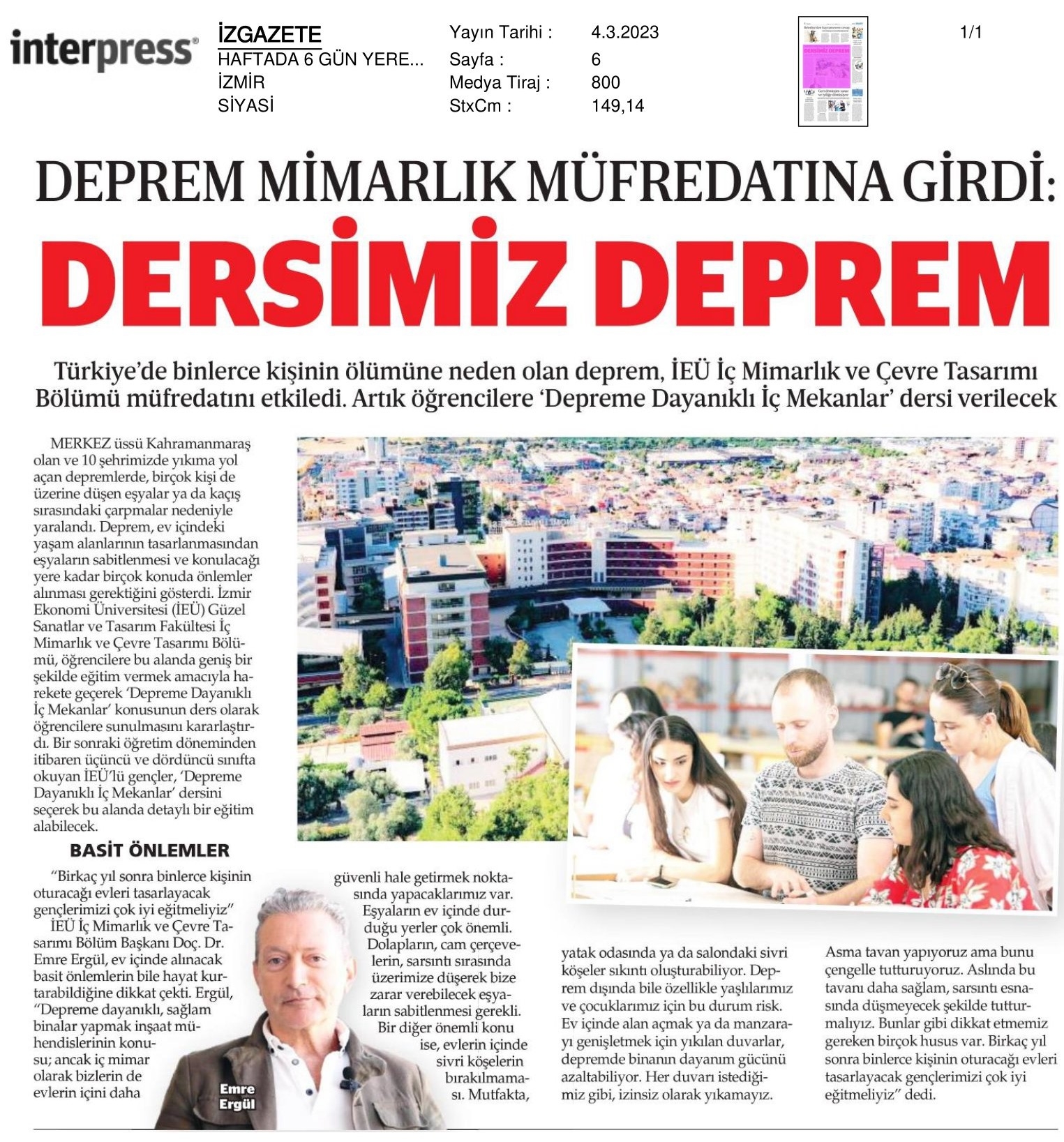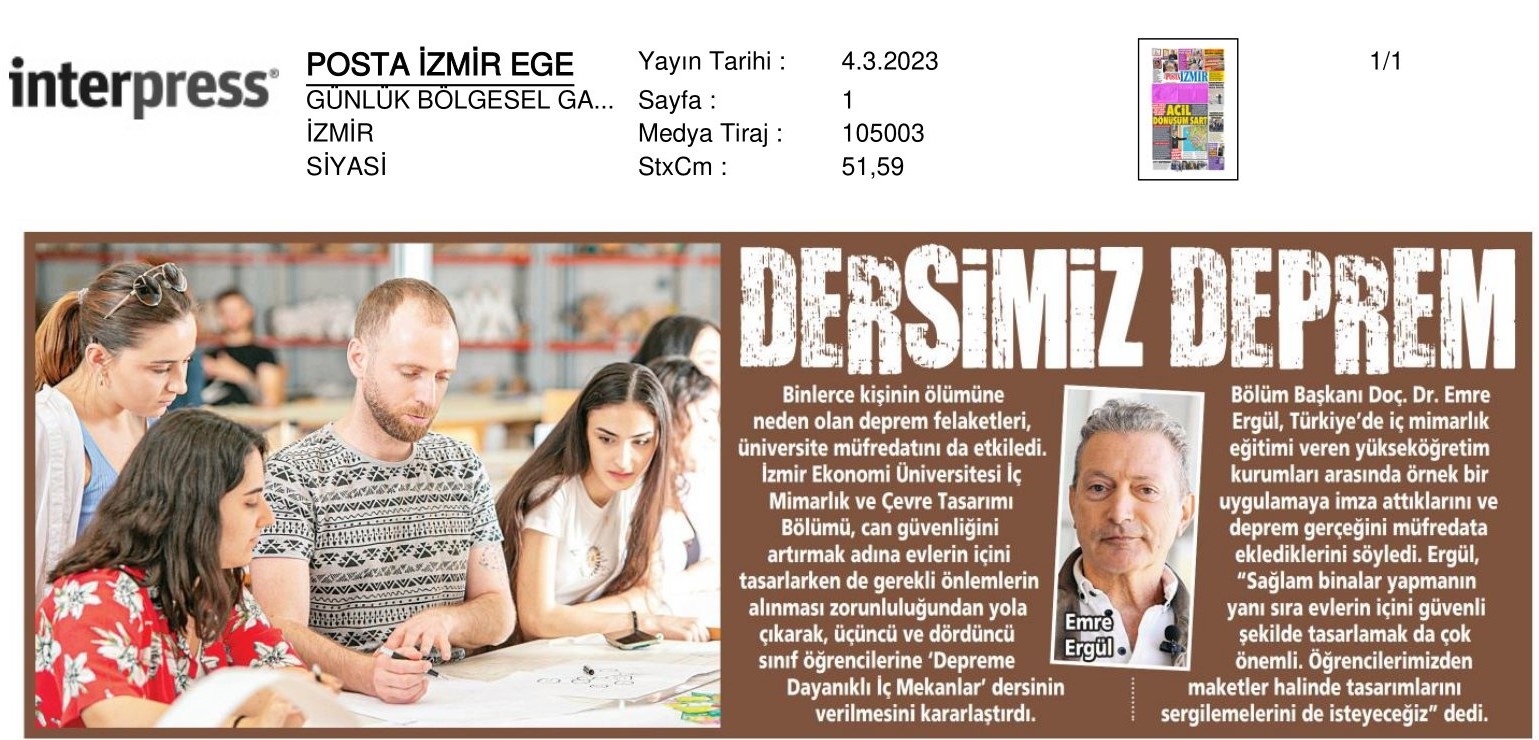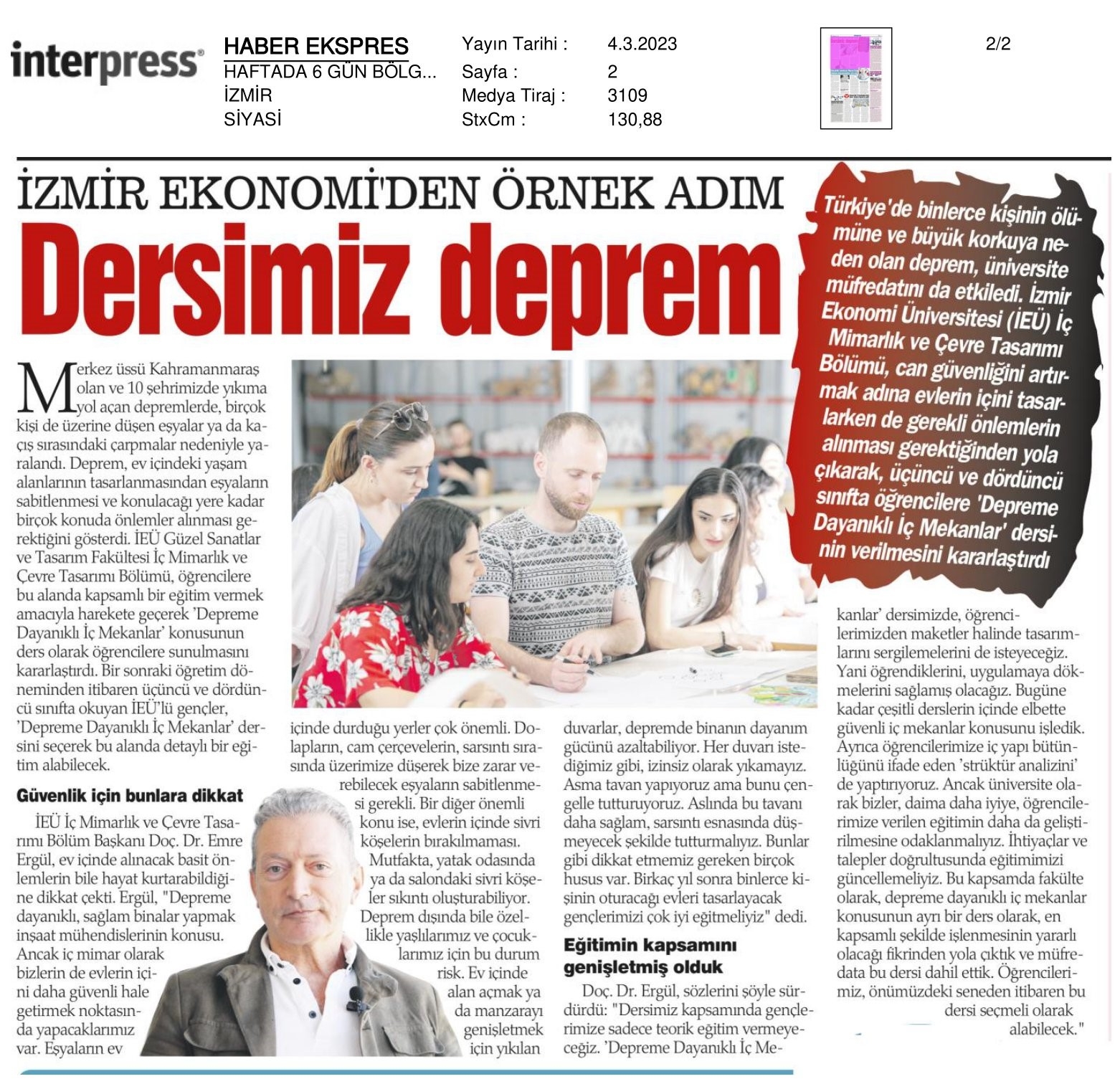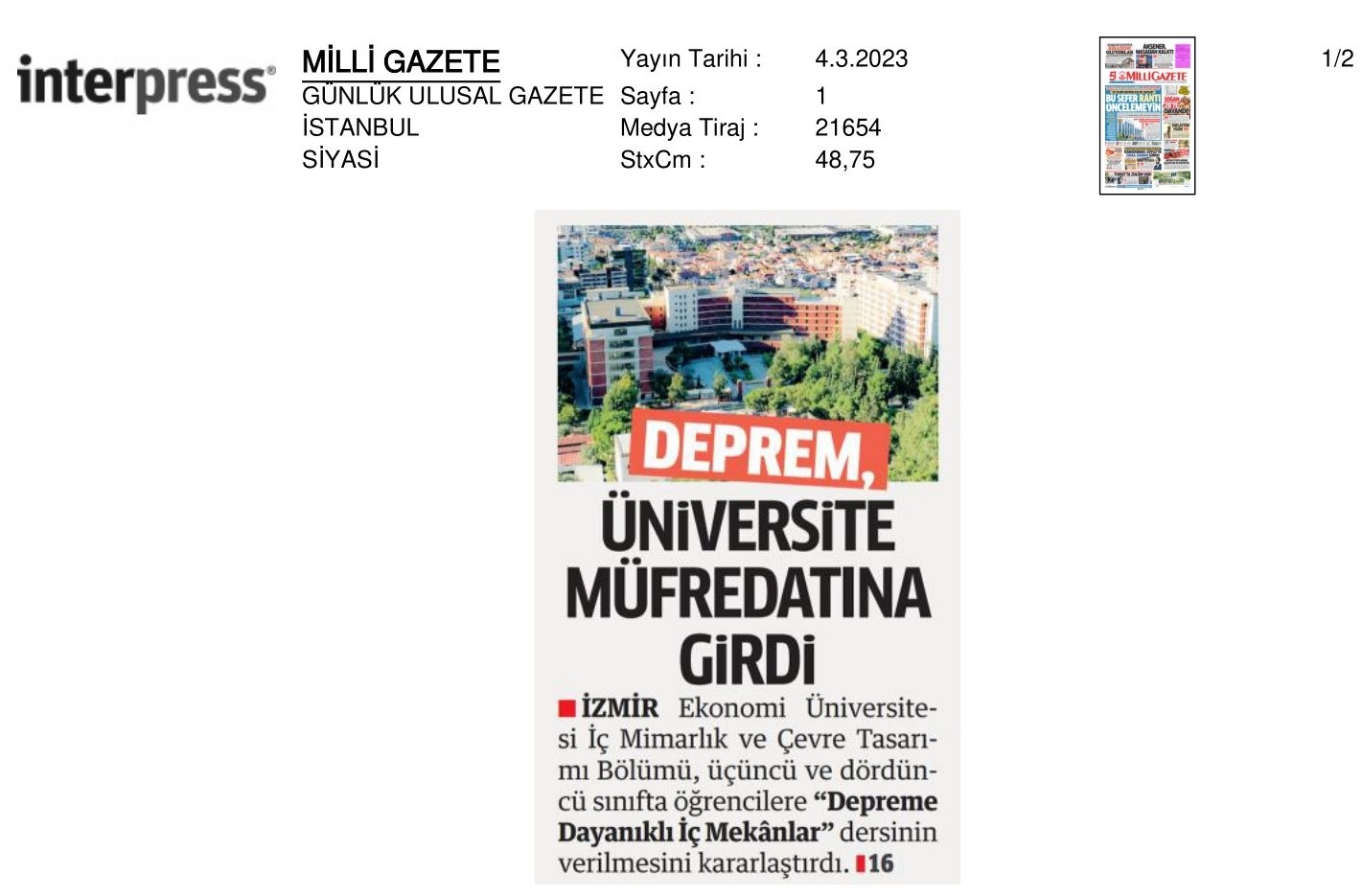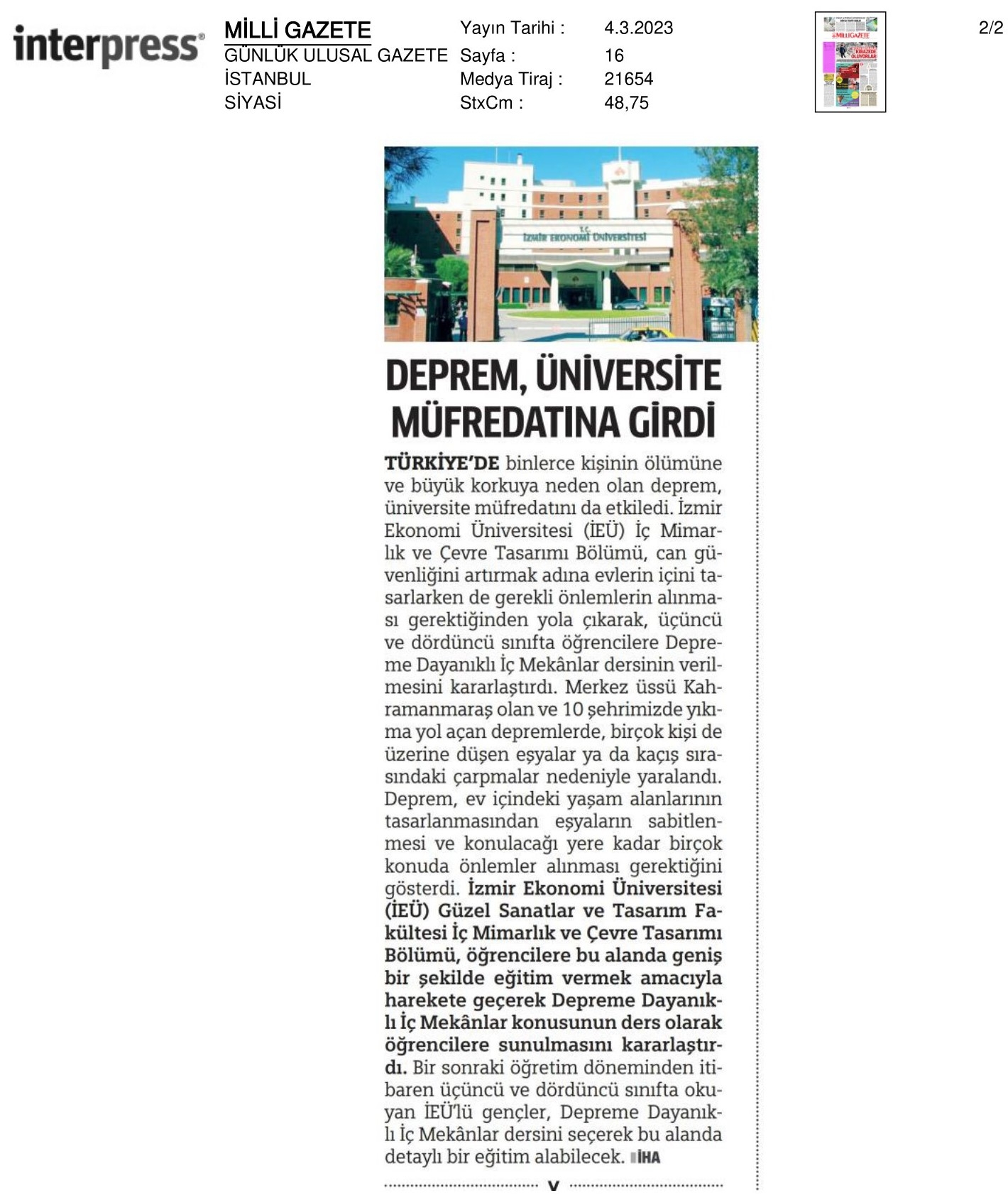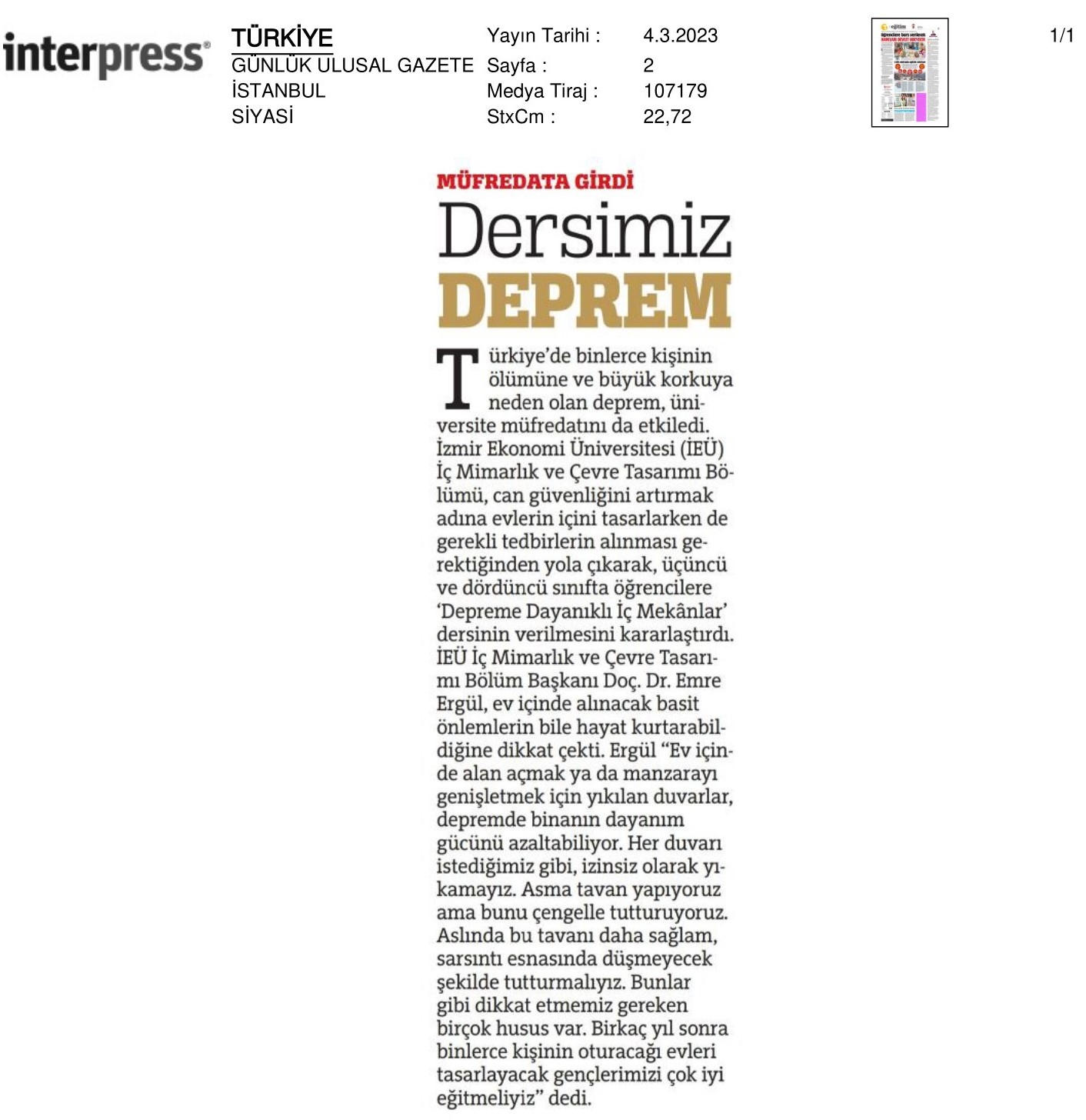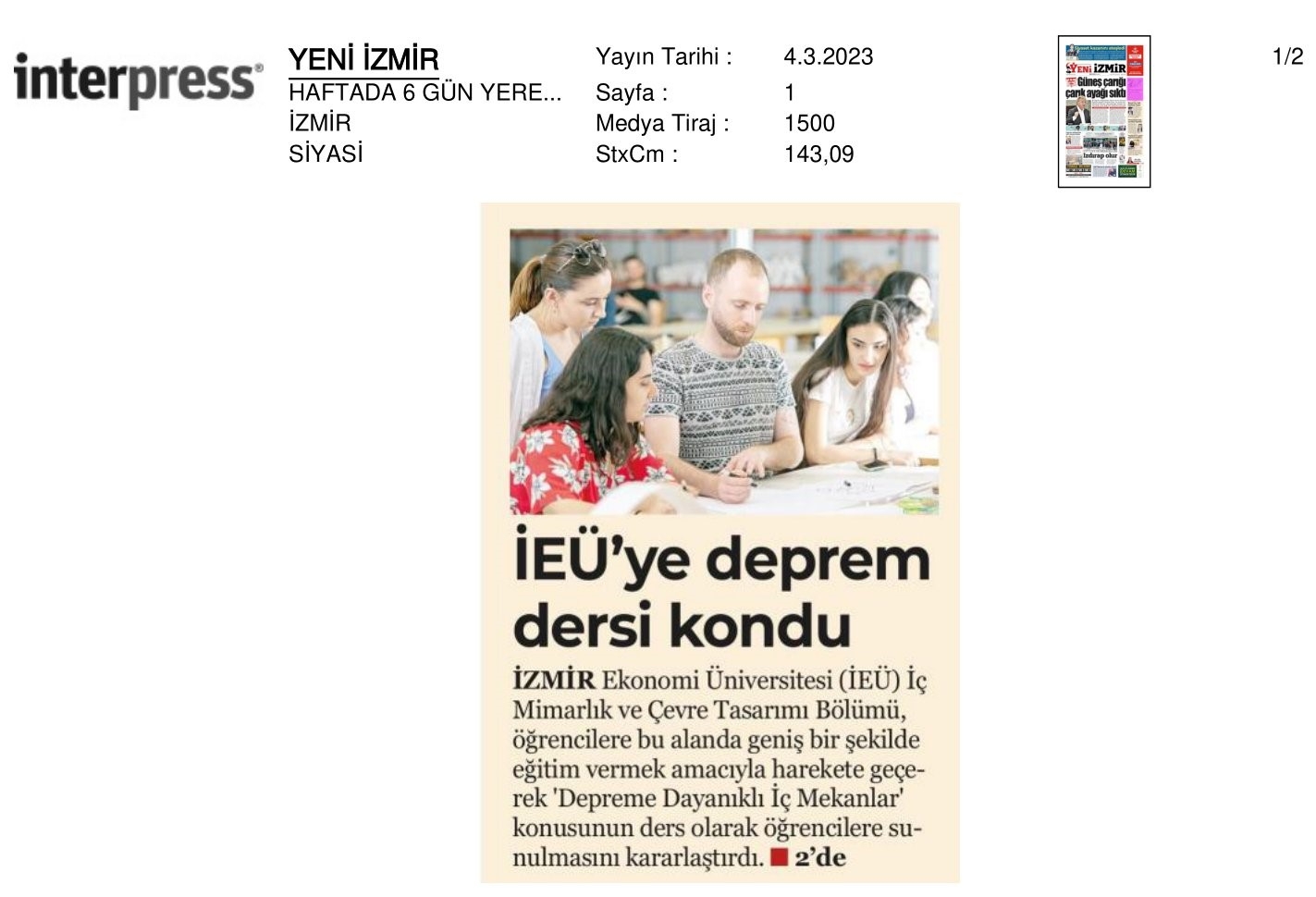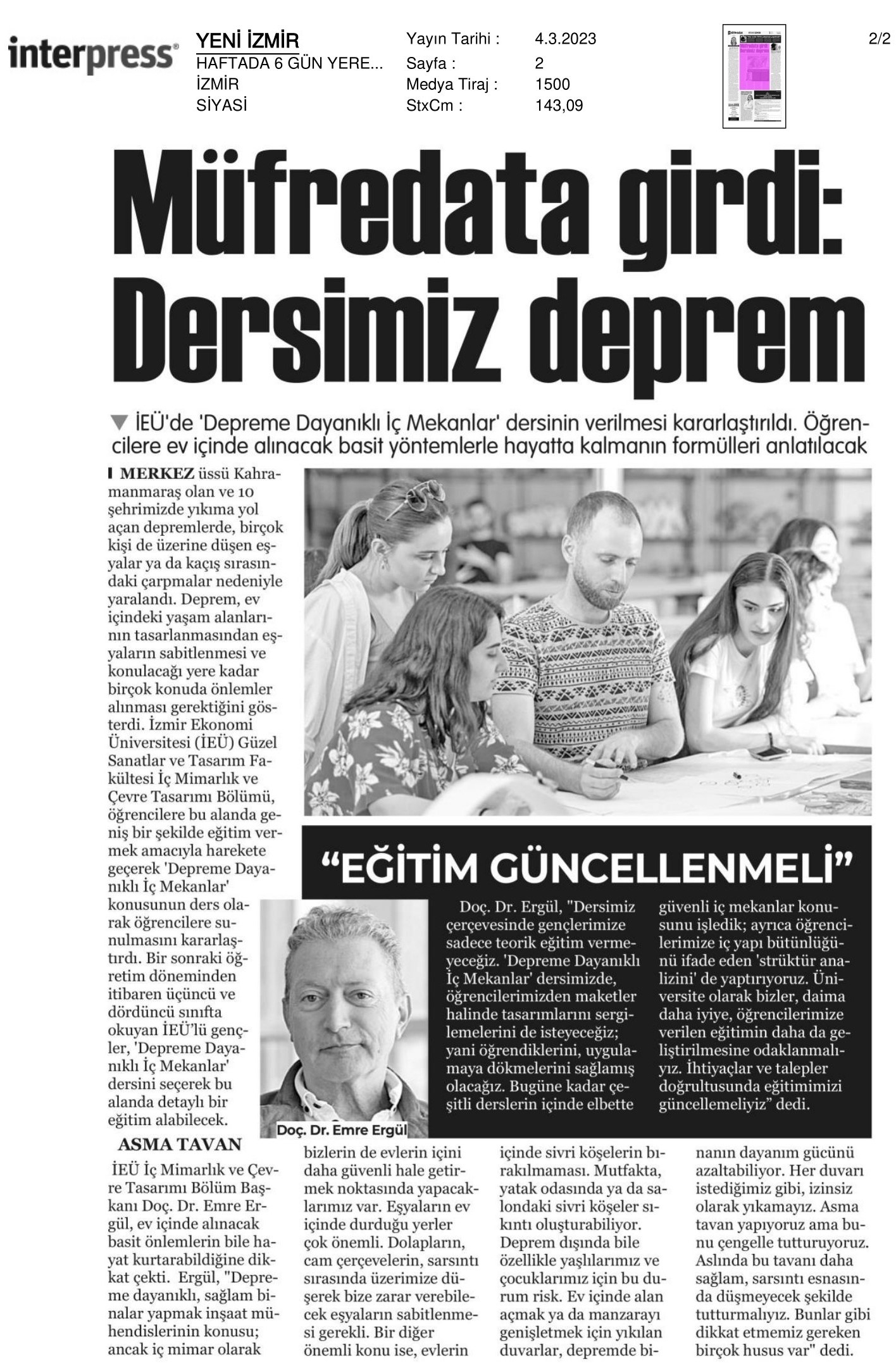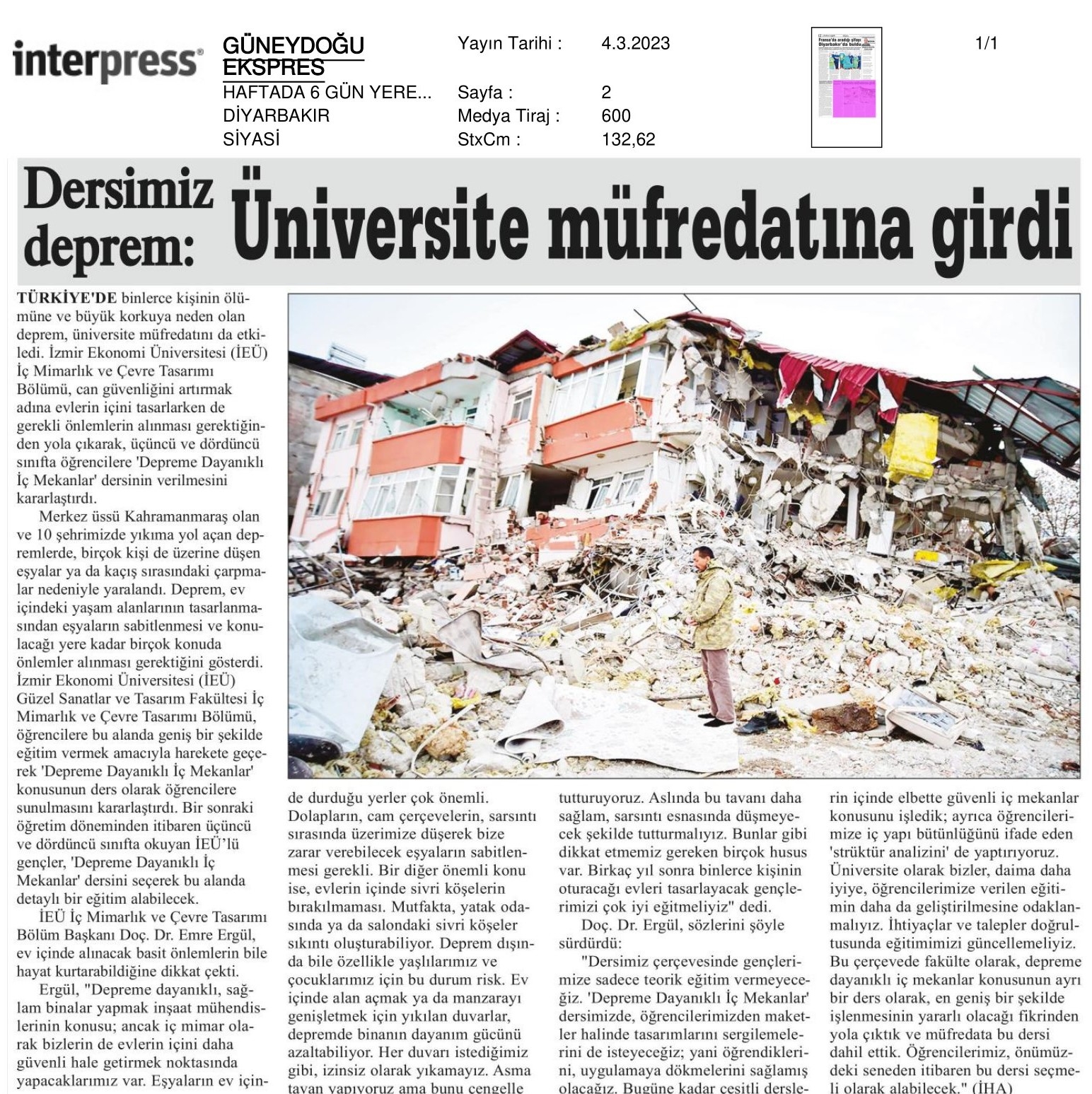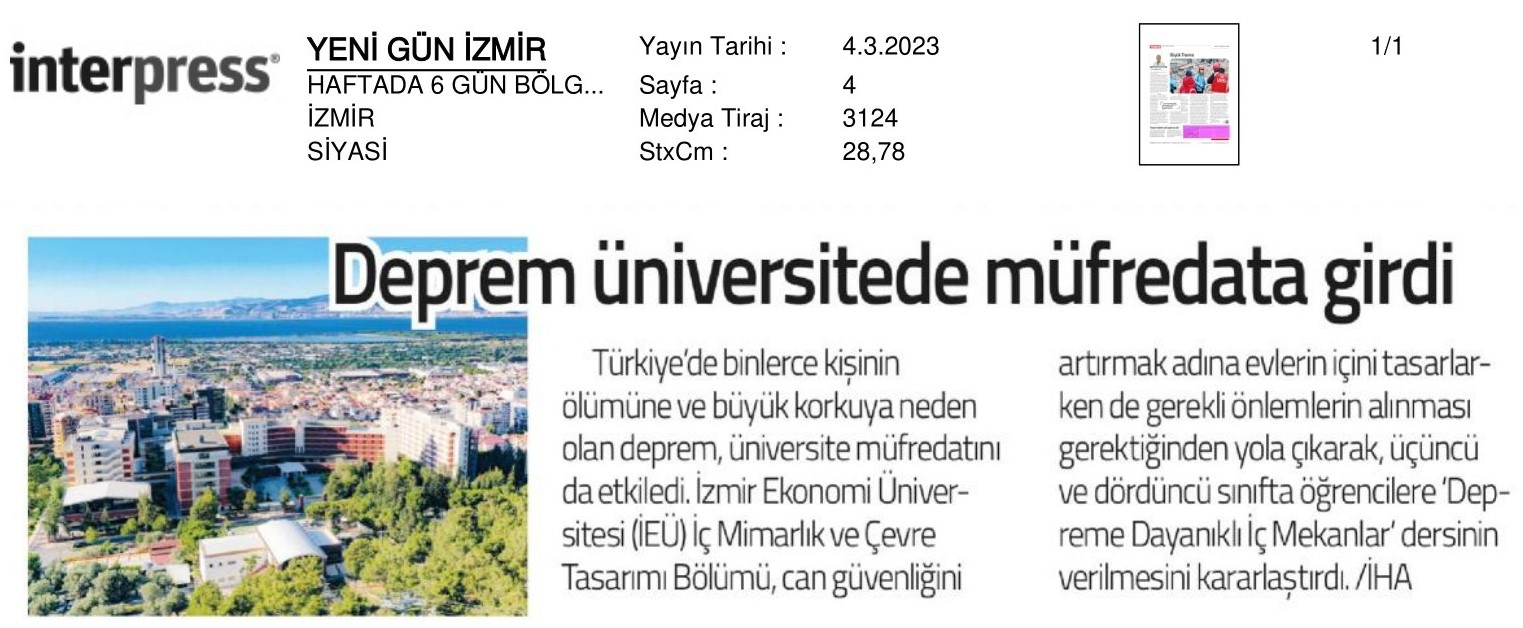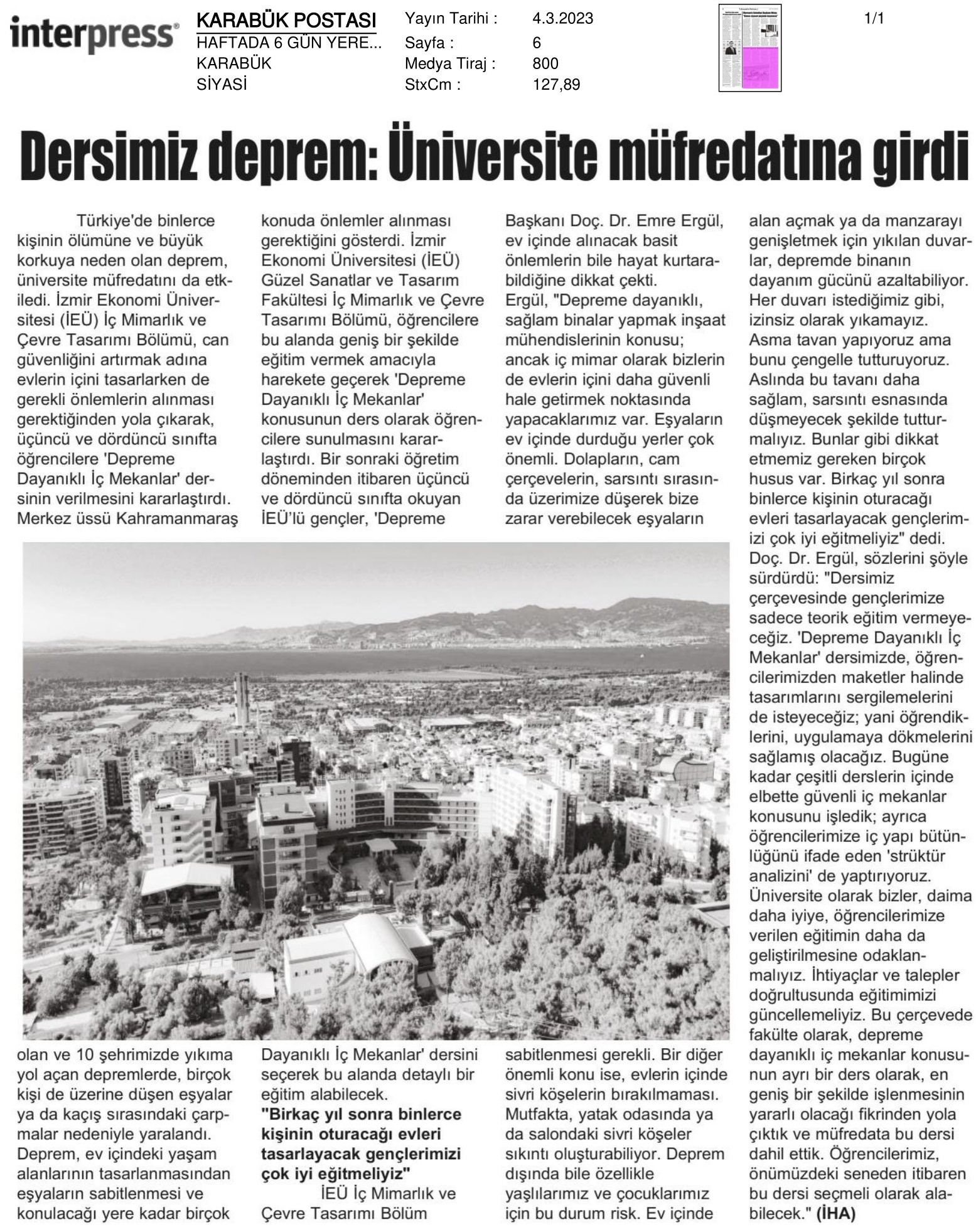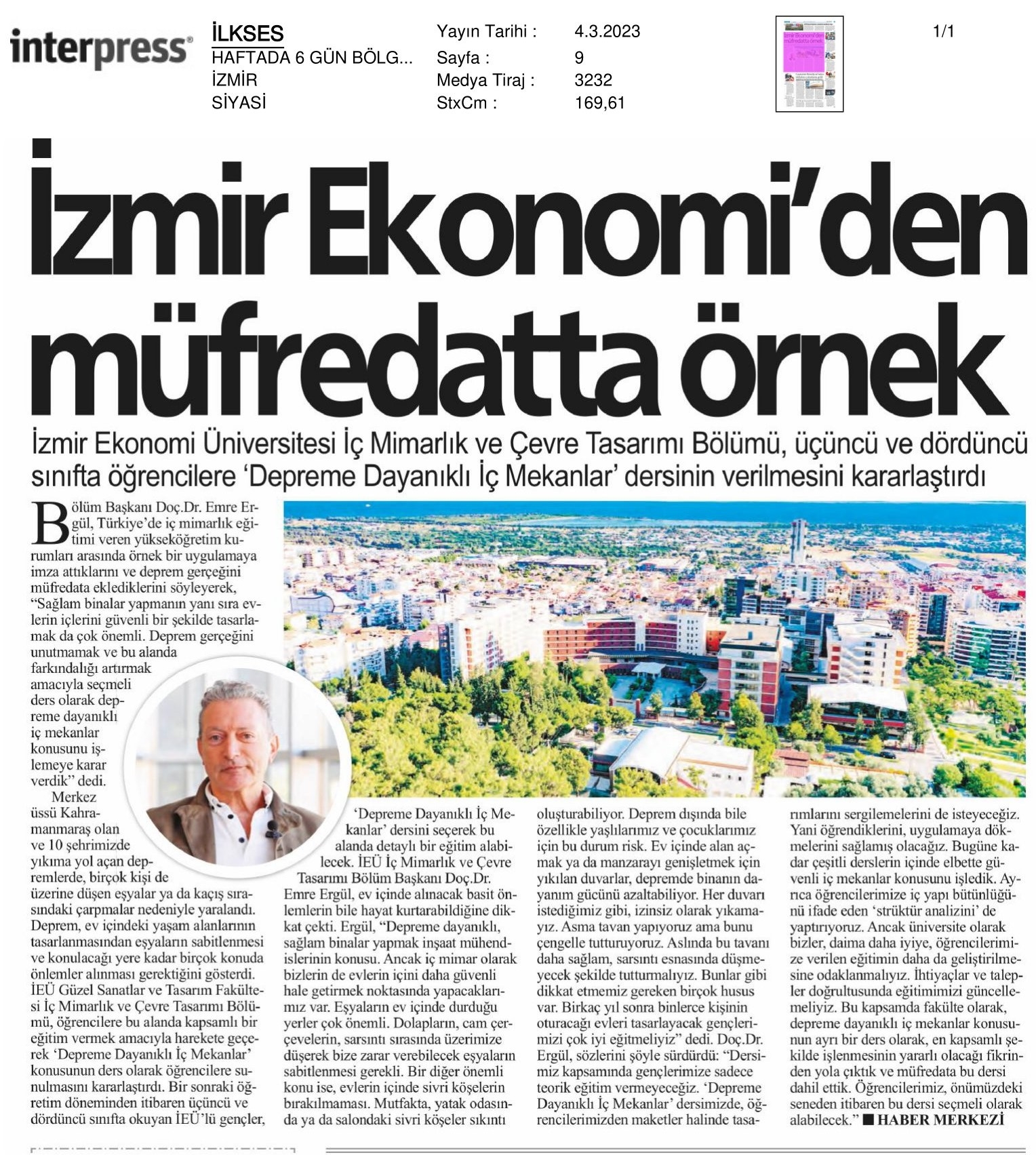'Earthquake-resistant interiors' made it to the curriculum
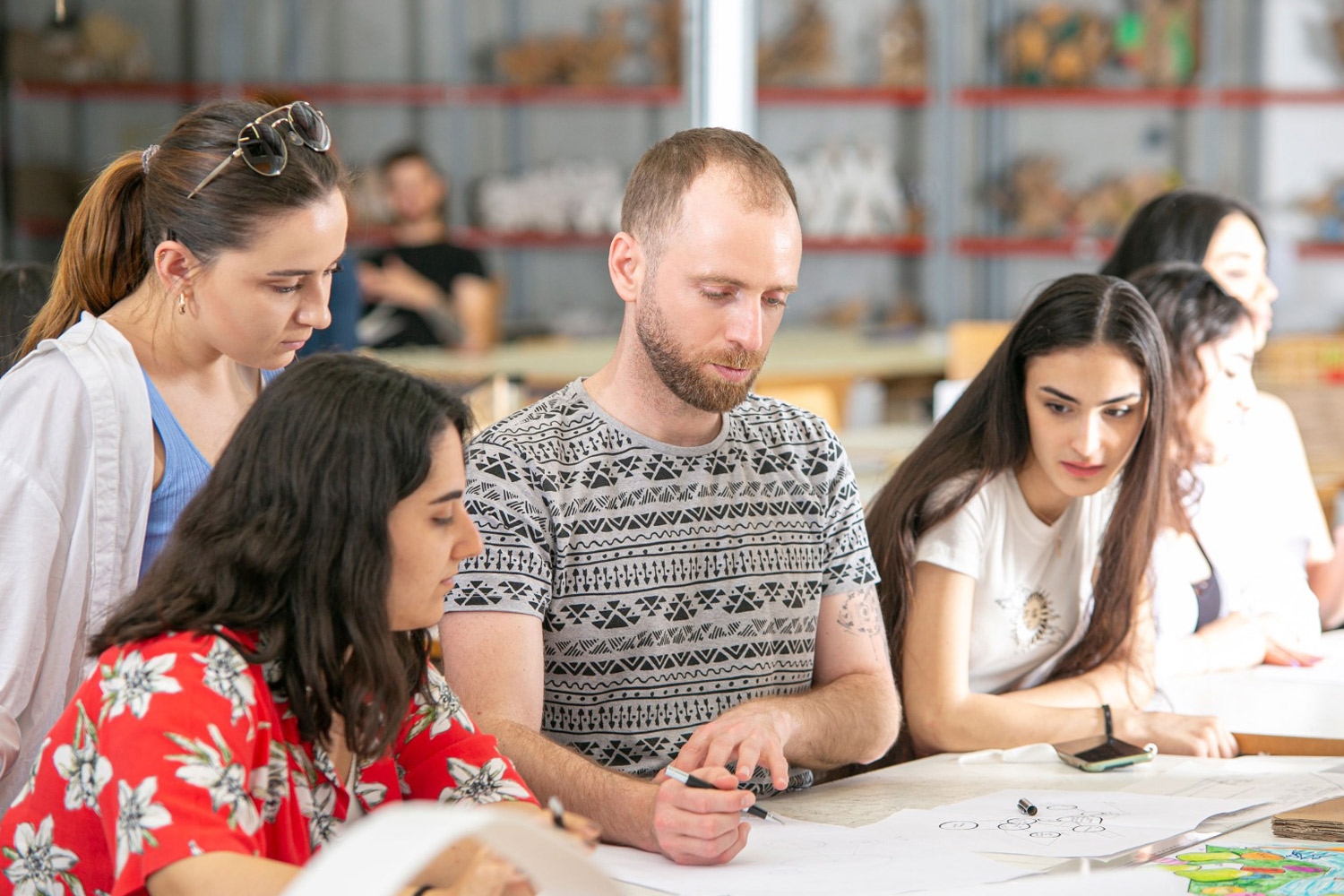
The earthquake, which killed tens of thousands of people in Turkey and caused great fear, also affected the university curriculum. Izmir University of Economics (IUE) Department of Interior Architecture and Environmental Design decided that the 'Earthquake Resistant Interiors' course should be taught to the third and fourth year students, considering that necessary precautions should be taken while designing the interior of the houses in order to increase life safety. Assoc. Prof. Dr. Emre Ergül stated that they started an exemplary practice among higher education institutions providing interior architecture education in Turkey and added earthquake phenomenon to the curriculum. Assoc. Prof. Dr. Ergül said, “It is also very important to design the interior of the houses safely, in addition to making sturdy buildings. We decided to cover the subject of earthquake resistant interiors as an elective course in order not to forget the reality of earthquakes and to raise awareness in this area."
In the earthquake, the epicenter of which was Kahramanmaraş and causing destruction in 10 of our cities, many people were injured due to the objects falling on them or the collisions during the escape. The earthquake showed that precautions should be taken in many areas from the design of the living spaces in the house to securing the furniture to the Wall and the place where they will be placed. IUE Faculty of Fine Arts and Design, Department of Interior Architecture and Environmental Design took action to provide students with a comprehensive education in this field and decided to present the subject of 'Earthquake-Resistant Interiors' to students as a course. Starting from the next academic year, the third and fourth year IUE students will be able to receive a detailed education in this field by choosing the 'Earthquake-Resistant Interiors' course.
ATTENTION TO THESE FOR SAFETY
Assoc. Prof. Dr. Emre Ergül pointed out that even simple measures to be taken at home can save lives. Ergül said, “Building earthquake-resistant and durable buildings is the subject of civil engineers. However, as interior architects, we also have things to do to make the interior of the houses safer. The places where things are positioned in the house are very important. It is necessary to secure the cabinets, glass frames, and the items that may fall on us during the shaking and harm us. Another important issue is not to leave sharp corners inside the houses. Sharp corners in the kitchen, bedroom or living room can be a problem. Aside from the earthquake, this is a risk, especially for the elderly and children. The walls that are demolished to make room in the house or to expand the view can reduce the strength of the building in an earthquake. We cannot demolish every wall as we wish, without permission. We make a false ceiling, but we fasten it with hooks. In fact, we should fix this ceiling more solidly, so that it does not fall during the shaking. There are many issues such as these that we should pay attention to. We must train prospective designers very well as they will design houses where thousands of people will live in a few years."
WE EXPANDED THE SCOPE OF EDUCATION
Assoc. Prof. Dr. Ergül continued as follows: “Within the scope of the 'Earthquake-Resistant Interiors' course, we will not only provide theoretical training to students, we will also ask them to exhibit their designs as models. In other words, we will enable them to put into practice what they have learned. So far, we have covered the subject of safe interiors in various courses. We also have our students do the 'structural analysis', which expresses the integrity of the internal structure. But as a university, we must always focus on the better, on the further development of the education given to students. We should update the curriculum in line with the needs and demands. In this context, we, as the faculty, set out from the idea that it would be beneficial to cover the subject of earthquake resistant interiors as a separate course, in the most comprehensive way, and included this course in the curriculum. Students will be able to take this course as an elective starting next year."



